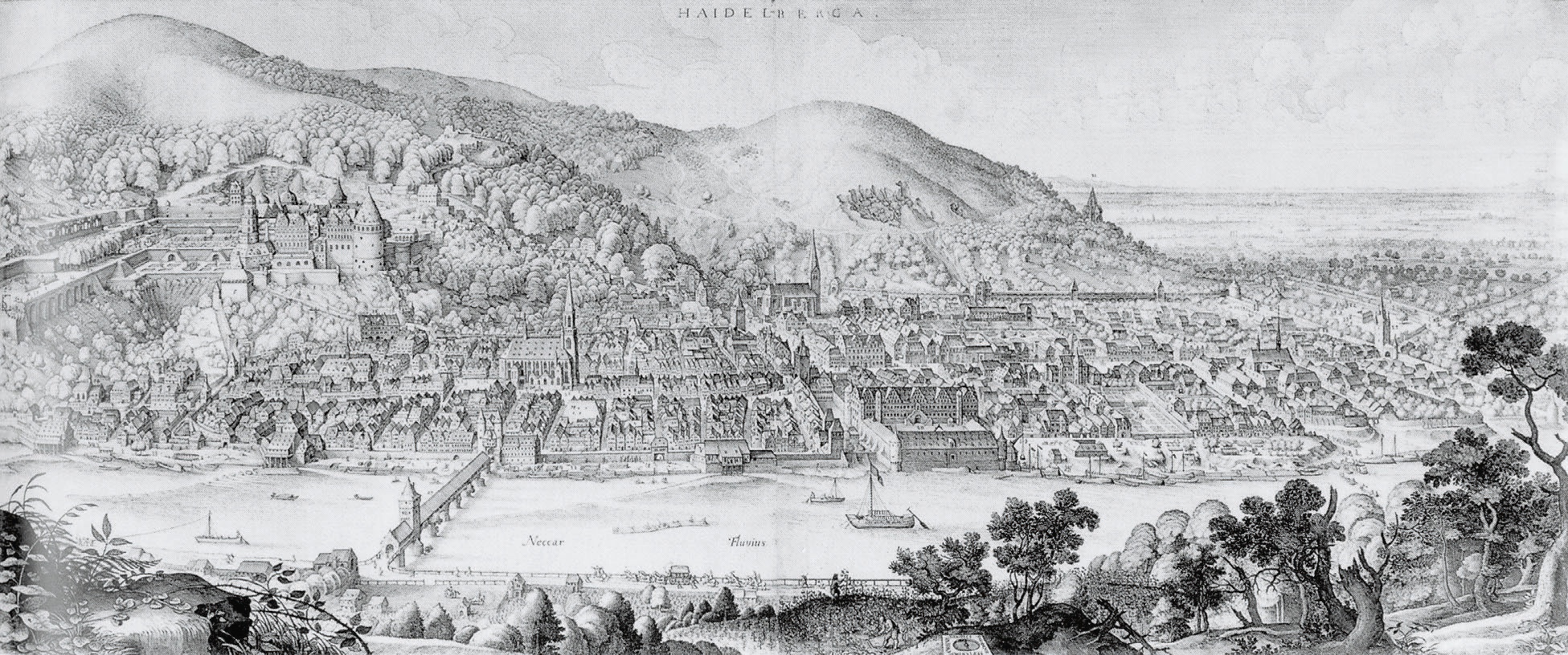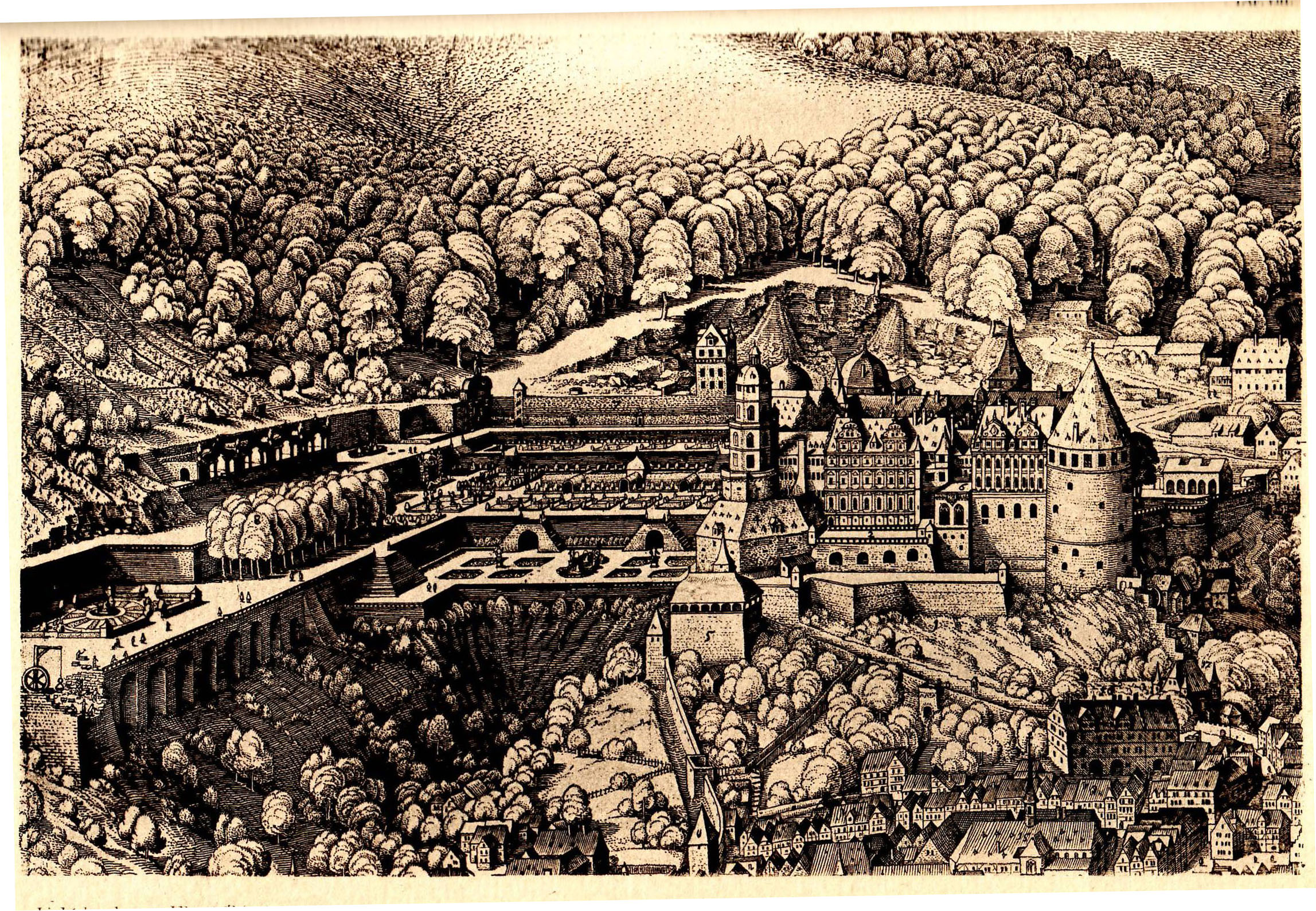
Matthäus Merian in Heidelberg
Matthäus Merian’s city views are still popular today. The prints characterized by their richness of detail are among the oldest views of the castle and the old town as well as the surrounding countryside. In one of his major works, the “Topographia Germaniae”, the engraver and publisher depicted Heidelberg Castle in its heyday. The artist was born in Basel on September 22, 1593.
Over 2,000 important towns, monasteries and castles are depicted in the “Topographia Germaniae”. The complete work comprises 30 volumes – it is one of the largest published works of its time – and is considered one of Matthäus Merian’s major works. The copperplate engraver and publisher’s work is still known and appreciated today, as it offers a detailed glimpse into a bygone world. One of the most picturesque views of Heidelberg Castle dates from 1645 and can be found in the famous series. The engraving documents the fascination that the castle, which towers magnificently over the city, still exudes today. The view shows the complex in its heyday: the Friedrichsbau, English Building and palace garden are extremely representative. But the graphic is idealized. The Thirty Years’ War, which raged from 1618 onwards, hit the Electoral Palatinate particularly hard. The palace was extensively destroyed and reconstruction work only began in 1648.
Matthäus Merian was the son of a councillor and was thus born into a wealthy family. He learned to draw, engrave and etch in Zurich at the age of 13. After his three-year apprenticeship, he embarked on his journeyman’s journey. In the following years, he worked in Strasbourg, Nancy and Paris. His travels took him via Augsburg, Stuttgart and the Netherlands to Frankfurt am Main and Oppenheim. In 1617, he married Magdalena de Bry, the daughter of his employer at the time, the publisher Johann Theodor de Bry. In the years that followed, Merian lived in Oppenheim and Heidelberg. With his panorama of the city of Heidelberg, which he produced in 1620, he wanted to gain support from the middle classes, the university and the electoral court. However, the great political upheavals of his time – in 1618 a conflict began that would develop into the Thirty Years’ War – thwarted his plans.
Merian moved to Basel in 1620. Three years later, his father-in-law died and Merian took over his publishing house in Frankfurt. There, from 1633, he produced the “Theatrum Europaeum” – a series of chronicles explaining contemporary history – and from 1642 the “Topographia Germaniae”, which presents and illustrates important cities, monasteries and castles. Merian died in 1650. After his death, his sons continued his father’s work.
THE MERIAN KANZEL The place where Matthäus Merian created his panoramic view of the city is well known: It is located above the famous Philosophenweg, which offers an enchanting view of the city and castle. The engraving, which was completed in 1620, shows Heidelberg at the height of its power. Unfortunately, it is not known whether the engraver ever visited the castle he portrayed *.
- Editor’s note: Merian’s Kupferstich of the “Große Faß von Heidelberg” to be found in the “Topographia Palatinates Rheni et Vicinarum Regionis” from 1645 may indicate that he certainly did have access to the castle during his stay.
